- Home
- Patricia Cornwell
Book of the Dead
Book of the Dead Read online
Book of the Dead
Also by Patricia Cornwell
SCARPETTA SERIES
Predator
Trace
Blow Fly
The Last Precinct
Black Notice
Point of Origin
Unnatural Exposure
Cause of Death
From Potter’s Field
The Body Farm
Cruel and Unusual
All That Remains
Body of Evidence
Postmortem
NONFICTION
Portrait of a Killer:
Jack the Ripper—Case Closed
ANDY BRAZIL SERIES
Isle of Dogs
Southern Cross
Hornet’s Nest
OTHER FICTION
At Risk
BIOGRAPHY
Ruth, A Portrait:
The Story of Ruth Bell Graham
OTHER WORKS
Food to Die For:
Secrets from Kay Scarpetta’s Kitchen
Life’s Little Fable
Scarpetta’s Winter Table
Book of the Dead
Patricia Cornwell
G. P. PUTNAM’S SONS
NEW YORK
G. P. PUTNAM’S SONS
Publishers Since 1838
Published by the Penguin Group
Penguin Group (USA) Inc., 375 Hudson Street, New York, New York 10014, USA • Penguin Group (Canada), 90 Eglinton Avenue East, Suite 700, Toronto, Ontario M4P 2Y3, Canada (a division of Pearson Penguin Canada Inc.) • Penguin Books Ltd, 80 Strand, London WC2R 0RL, England • Penguin Ireland, 25 St Stephen’s Green, Dublin 2, Ireland (a division of Penguin Books Ltd) • Penguin Group (Australia), 250 Camberwell Road, Camberwell, Victoria 3124, Australia (a division of Pearson Australia Group Pty Ltd) • Penguin Books India Pvt Ltd, 11 Community Centre, Panchsheel Park, New Delhi–110 017, India • Penguin Group (NZ), 67 Apollo Drive, Rosedale, North Shore 0632, New Zealand (a division of Pearson New Zealand Ltd) • Penguin Books (South Africa) (Pty) Ltd, 24 Sturdee Avenue, Rosebank, Johannesburg 2196, South Africa
Penguin Books Ltd, Registered Offices: 80 Strand, London WC2R 0RL, England
Copyright © 2007 by Cornwell Enterprises, Inc.
All rights reserved. No part of this book may be reproduced, scanned, or distributed in any printed or electronic form without permission. Please do not participate in or encourage piracy of copyrighted materials in violation of the author’s rights.
Purchase only authorized editions.
Published simultaneously in Canada
Library of Congress Cataloging-in-Publication Data
Cornwell, Patricia Daniels.
Book of the dead / Patricia Cornwell.
p. cm.
ISBN: 1-4295-4371-X
1. Scarpetta, Kay (Fictitious character)—Fiction. 2. Medical examiners (Law)—Fiction. 3. Forensic pathologists—Fiction. 4. Women physicians—Fiction. 5. South Carolina—Fiction. I. Title.
PS3553.O692B65 2007 2007028170
This is a work of fiction. Names, characters, places, and incidents either are the product of the author’s imagination or are used fictitiously, and any resemblance to actual persons, living or dead, businesses, companies, events, or locales is entirely coincidental.
While the author has made every effort to provide accurate telephone numbers and Internet addresses at the time of publication, neither the publisher nor the author assumes any responsibility for errors, or for changes that occur after publication. Further, the publisher does not have any control over and does not assume any responsibility for author or third-party websites or their content.
Acknowledgments
I am especially grateful to Dr. Staci Gruber, Assistant Professor of Psychiatry, Harvard Medical School, and Associate Director of the Cognitive Neuroimaging Laboratory, McLean Hospital.
This book is dedicated
to my publisher,
Ivan Held.
Contents
Acknowledgments
Rome
Chapter 1
Chapter 2
Chapter 3
Chapter 4
Chapter 5
Chapter 6
Chapter 7
Chapter 8
Chapter 9
Chapter 10
Chapter 11
Chapter 12
Chapter 13
Chapter 14
Chapter 15
Chapter 16
Chapter 17
Chapter 18
Chapter 19
Chapter 20
Chapter 21
Chapter 22
Chapter 23
Rome
Water splashing. A gray mosaic tile tub sunk deep into a terracotta floor.
Water pours slowly from an old brass spout, and darkness pours through a window. On the other side of old, wavy glass is the piazza, and the fountain, and the night.
She sits quietly in water, and the water is very cold, with melting ice cubes in it, and there is little in her eyes—nothing much there anymore. At first, her eyes were like hands reaching out to him, begging him to save her. Now her eyes are the bruised blue of dusk. Whatever was in them has almost left. Soon she will sleep.
“Here,” he says, handing her a tumbler that was handblown in Murano and now is filled with vodka.
He is fascinated by parts of her that have never seen the sun. They are pale like limestone, and he turns the spigot almost off, and the water is a trickle now, and he watches her rapid breathing and hears the chattering of her teeth. Her white breasts float beneath the surface of the water, delicate like white flowers. Her nipples, hard from the cold, are tight pink buds. Then he thinks of pencils. Of chewing off nubby pink erasers when he was in school, and telling his father and sometimes his mother that he didn’t need erasers because he didn’t make mistakes. When in truth, he liked to chew. He couldn’t help it, and that also was the truth.
“You’ll remember my name,” he says to her.
“I won’t,” she says. “I can forget it.” Chattering.
He knows why she says it: If she forgets his name, her destiny will be rethought like a bad battle plan.
“What is it?” he asks. “Tell me my name.”
“I don’t remember.” Crying, shaking.
“Say it,” he says, looking at her tan arms, pebbly with goose bumps, the blond hair on them erect, her young breasts and the darkness between her legs underwater.
“Will.”
“And the rest of it?”
“Rambo.”
“And you think that’s amusing,” he says, naked, sitting on the lid of the toilet.
She shakes her head vigorously.
Lying. She made fun of him when he told her his name. She laughed and said Rambo is make-believe, a movie name. He said it’s Swedish. She said he isn’t Swedish. He said the name is Swedish. Where did she think it came from? It’s a real name. “Right,” she said. “Like Rocky,” she said, laughing. “Look it up on the Internet,” he said. “It’s a real name,” he said, and he didn’t like that he had to explain his name. This was two days ago, and he didn’t hold it against her, but he was aware of it. He forgave her because despite what the world says, she suffers unbearably.
“Knowing my name will be an echo,” he says. “It makes no difference, not in the least. Just a sound already said.”
“I would never say it.” Panic.
Her lips and nails are blue, and she shivers uncontrollably. She stares. He tells her to drink more, and she doesn’t dare refuse him. The slightest act of insubordination, and she knows what happens. Even one small scream, and she knows what happens. He sits calmly on the lid of the toilet, his legs splayed so she can see his excitement, and fear it. She doesn
’t beg anymore or tell him to have his way with her, if that’s the reason she’s his hostage. She doesn’t say this anymore because she knows what happens when she insults him and implies that if he had a way it would be with her. Meaning she wouldn’t give it willingly and want it.
“You realize I asked you nicely,” he says.
“I don’t know.” Teeth chattering.
“You do know. I asked you to thank me. That’s all I asked, and I was nice to you. I asked you nicely, then you had to do this,” he says. “You had to make me do this. You see”—he gets up and watches his nakedness in the mirror over the smooth marble sink—“your suffering makes me do this,” his nakedness in the mirror says. “And I don’t want to do this. So you’ve hurt me. Do you understand you’ve critically hurt me by making me do this?” his nakedness in the mirror says.
She says she understands, and her eyes scatter like flying shards of glass as he opens the toolbox, and her scattered gaze fixes on the box cutters and knives and fine-tooth saws. He lifts out a small bag of sand and sets it on the edge of the sink. He pulls out ampules of lavender glue and sets them down, too.
“I’ll do anything you want. Give you anything you want.” She has said this repeatedly.
He has ordered her not to say it again. But she just did.
His hands dip into the water, and the coldness of the water bites him, and he grabs her ankles and lifts her up. He holds her up by her cold, tan legs with their cold, white feet and feels her terror in her panicking muscles as he holds her cold ankles tight. He holds her a little longer than last time, and she struggles and flails and thrashes violently, cold water splashing loudly. He lets go. She gasps and coughs and makes strangling cries. She doesn’t complain. She’s learned not to complain—it took a while, but she’s learned it. She’s learned all of this is for her own good and is grateful for a sacrifice that will change his life—not hers, but his—in a way that isn’t good. Wasn’t good. Can never be good. She should be grateful for his gift.
He picks up the trash bag he filled with ice from the ice maker in the bar and pours the last of it in the tub and she looks at him, tears running down her face. Grief. The dark edges of it showing.
“We used to hang them from the ceiling over there,” he says. “Kick them in the sides of their knees, over and over. Over there. All of us coming into the small room and kicking the sides of their knees. It’s excruciatingly painful and, of course, crippling, and, of course, some of them died. That’s nothing compared to other things I saw over there. I didn’t work in that prison, you see. But I didn’t need to, because there was plenty of that type of behavior to go around. What people don’t understand is it wasn’t stupid to film any of it. To photograph it. It was inevitable. You have to. If you don’t, it’s as if it never happened. So people take pictures. They show them to others. It only takes one. One person to see it. Then the whole world does.”
She glances at the camera on the marble-top table against the stucco wall.
“They deserved it anyway, didn’t they?” he says. “They forced us to be something we weren’t, so whose fault was it? Not ours.”
She nods. She shivers, and her teeth chatter.
“I didn’t always participate,” he says. “I did watch. At first it was difficult, perhaps traumatic. I was against it, but the things they did to us. And because of what they did, we were forced to do things back, so it was their fault that they forced us, and I know you see that.”
She nods and cries and shakes.
“The roadside bombs. Kidnapping. Much more than you hear about,” he says. “You get used to it. Just like you’re getting used to the cold water, aren’t you?”
She isn’t used to it, only numb and on her way to hypothermia. By now her head pounds and her heart feels as if it will explode. He hands her the vodka, and she drinks.
“I’m going to open the window,” he says. “So you can hear Bernini’s fountain. I’ve heard it much of my life. The night’s perfect. You should see the stars.” He opens the window and looks at the night, the stars, the fountain of four rivers, and the piazza. Empty at this hour. “You won’t scream,” he says.
She shakes her head and her chest heaves and she shivers uncontrollably.
“You’re thinking about your friends. I know that. Certainly they’re thinking about you. That’s too bad. And they aren’t here. They aren’t anywhere to be seen.” He looks at the deserted piazza again and shrugs. “Why would they be here now? They’ve left. Long ago.”
Her nose runs and tears spill and she shakes. The energy in her eyes—it’s not what it was when he met her, and he resents her for ruining who she was to him. Earlier, much earlier, he spoke Italian to her because it changed him into the stranger he needed to be. Now he speaks English because it no longer makes a difference. She glances at his excitement. Her glances at his excitement bounce against it like a moth against a lamp. He feels her there. She fears what’s there. But not as much as she fears everything else—the water, the tools, the sand, the glue. She doesn’t comprehend the thick black belt coiled on the very old tile floor, and she should fear it most of all.
He picks it up and tells her it’s a primitive urge to beat people who can’t defend themselves. Why? She doesn’t answer. Why? She stares at him in terror, and the light in her eyes is dull but crazed, like a mirror shattering right in front of him. He tells her to stand, and she does, shakily, her knees almost collapsing. She stands in the frigid water and he turns off the spout. Her body reminds him of a bow with a taut string because she’s flexible and powerful. Water trickles down her skin as she stands before him.
“Turn away from me,” he says. “Don’t worry. I’m not going to beat you with the belt. I don’t do that.”
Water quietly laps in the tub as she turns away from him, facing old, cracked stucco and a closed shutter.
“Now I need you to kneel in the water,” he says. “And look at the wall. Don’t look at me.”
She kneels, facing the wall, and he picks up the belt and slides the end of it through the buckle.
Chapter 1
Ten days later. April 27, 2007. A Friday afternoon.
Inside the virtual-reality theater are twelve of Italy’s most powerful law enforcers and politicians, whose names, in the main, forensic pathologist Kay Scarpetta can’t keep straight. The only non-Italians are herself and forensic psychologist Benton Wesley, both consultants for International Investigative Response (IIR), a special branch of the European Network of Forensic Science Institutes (ENFSI). The Italian government is in a very delicate position.
Nine days ago, American tennis star Drew Martin was murdered while on vacation, her nude, mutilated body found near Piazza Navona, in the heart of Rome’s historic district. The case is an international sensation, details about the sixteen-year-old’s life and death replayed nonstop on television, the crawls at the bottom of the screen doing just that—crawling by slowly and tenaciously, repeating the same details the anchors and experts are saying.
“So, Dr. Scarpetta, let’s clarify, because there seems to be much confusion. According to you, she was dead by two or three o’clock that afternoon,” says Captain Ottorino Poma, a medico legale in the Arma dei Carabinieri, the military police heading the investigation.
“That’s not according to me,” she says, her patience beginning to fray. “That’s according to you.”
He frowns in the low lighting. “I was so sure it was you, just minutes ago, talking about her stomach contents and alcohol level. And the fact they indicate she was dead within hours of when she was seen last by her friends.”
“I didn’t say she was dead by two or three o’clock. I believe it is you who continues to say that, Captain Poma.”
At a young age he already has a widespread reputation, and not an entirely good one. When Scarpetta first met him two years ago in the Hague at the ENFSI’s annual meeting, he was derisively dubbed the Designer Doctor and described as extraordinarily conceited and argumentative.
He is handsome—magnificent, really—with a taste for beautiful women and dazzling clothes, and today he is wearing a uniform of midnight blue with broad red stripes and bright silver embellishments, and polished black leather boots. When he swept into the theater this morning, he was wearing a red-lined cape.
He sits directly in front of Scarpetta, front row center, and rarely takes his eyes off her. On his right is Benton Wesley, who is silent most of the time. Everyone is masked by stereoscopic glasses that are synchronized with the Crime Scene Analysis System, a brilliant innovation that has made the Polizia Scientifica Italiana’s Unità per l’Analisi del Crimine Violento the envy of law enforcement agencies worldwide.
“I suppose we need to go through this again so you completely understand my position,” Scarpetta says to Captain Poma, who now rests his chin on his hand as if he is having an intimate conversation with her over a glass of wine. “Had she been killed at two or three o’clock that afternoon, then when her body was found at approximately eight-thirty the following morning, she would have been dead at least seventeen hours. Her livor mortis, rigor mortis, and algor mortis are inconsistent with that.”
She uses a laser pointer to direct attention to the three-dimensional muddy construction site projected on the wall-size screen. It’s as if they are standing in the middle of the scene, staring at Drew Martin’s mauled, dead body and the litter and earthmoving equipment around it. The red dot of the laser moves along the left shoulder, the left buttock, the left leg and its bare foot. The right buttock is gone, as is a portion of her right thigh, as if she had been attacked by a shark.

 Blow Fly
Blow Fly Unnatural Exposure
Unnatural Exposure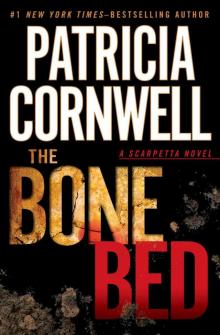 The Bone Bed
The Bone Bed Book of the Dead
Book of the Dead Flesh and Blood: A Scarpetta Novel (Scarpetta Novels Book 22)
Flesh and Blood: A Scarpetta Novel (Scarpetta Novels Book 22)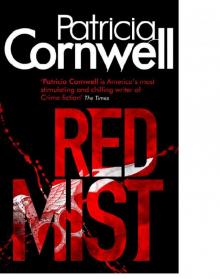 Red Mist
Red Mist Cruel & Unusual
Cruel & Unusual Hornet's Nest
Hornet's Nest Four Scarpetta Novels
Four Scarpetta Novels Scarpetta's Winter Table
Scarpetta's Winter Table Isle of Dogs
Isle of Dogs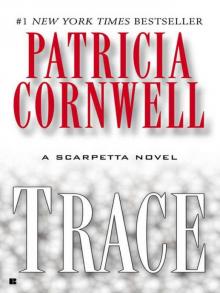 Trace
Trace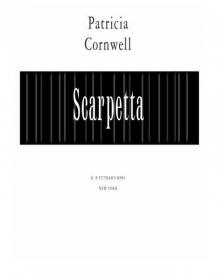 Postmortem
Postmortem Body of Evidence ks-2
Body of Evidence ks-2 Southern Cross
Southern Cross All That Remains
All That Remains Point of Origin
Point of Origin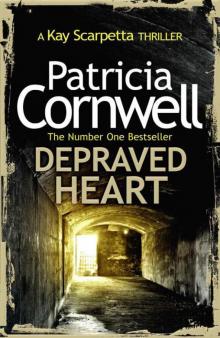 Depraved Heart
Depraved Heart Ruth, a Portrait: The Story of Ruth Bell Graham
Ruth, a Portrait: The Story of Ruth Bell Graham From Potter's Field
From Potter's Field Flesh and Blood
Flesh and Blood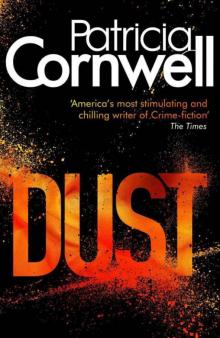 Dust
Dust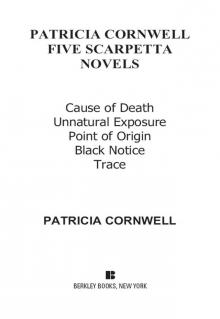 The Body Farm
The Body Farm Port Mortuary
Port Mortuary Quantum
Quantum Portrait of a Killer: Jack the Ripper - Case Closed
Portrait of a Killer: Jack the Ripper - Case Closed Spin (Captain Chase)
Spin (Captain Chase) Cause of Death
Cause of Death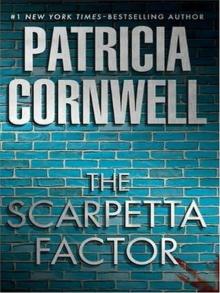 The Scarpetta Factor
The Scarpetta Factor Predator
Predator Scarpetta 18 - Port Mortuary
Scarpetta 18 - Port Mortuary Trace ks-13
Trace ks-13 Portrait of a Killer
Portrait of a Killer Cruel and Unusual ks-4
Cruel and Unusual ks-4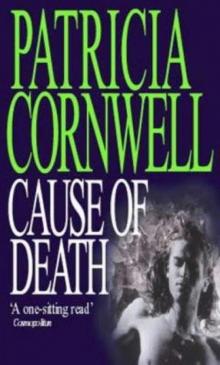 Cause Of Death ks-7
Cause Of Death ks-7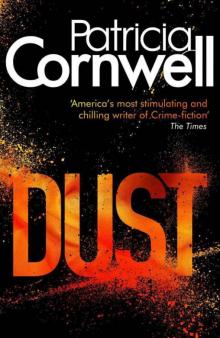 Dust ks-21
Dust ks-21 At Risk wg-1
At Risk wg-1 The Last Precinct ks-11
The Last Precinct ks-11 Book of the Dead ks-15
Book of the Dead ks-15 All That Remains ks-3
All That Remains ks-3 Ruth, a Portrait
Ruth, a Portrait Scarpetta's Winter Table (kay scarpetta)
Scarpetta's Winter Table (kay scarpetta) From Potter's Field ks-6
From Potter's Field ks-6 Scarpetta
Scarpetta Isle of Dogs jhabavw-3
Isle of Dogs jhabavw-3 Hornet's Nest jhabavw-1
Hornet's Nest jhabavw-1 The Body Farm ks-5
The Body Farm ks-5 Blow Fly ks-12
Blow Fly ks-12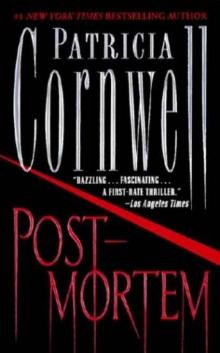 Post Mortem
Post Mortem Five Scarpetta Novels
Five Scarpetta Novels Chasing the Ripper (Kindle Single)
Chasing the Ripper (Kindle Single) Point of Origin ks-9
Point of Origin ks-9 Port Mortuary (2010)
Port Mortuary (2010) Unnatural Exposure ks-8
Unnatural Exposure ks-8 Southern Cross uhabavw-2
Southern Cross uhabavw-2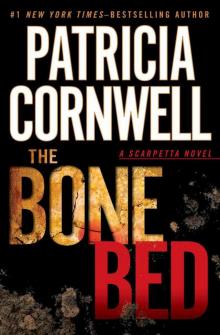 The Bone Bed ks-20
The Bone Bed ks-20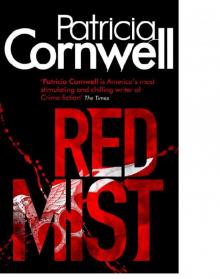 Red Mist ks-19
Red Mist ks-19 Port Mortuary (2010) ks-18
Port Mortuary (2010) ks-18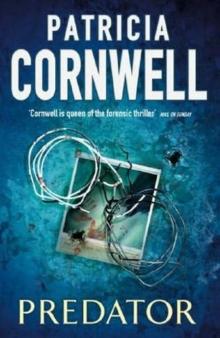 Predator ks-14
Predator ks-14